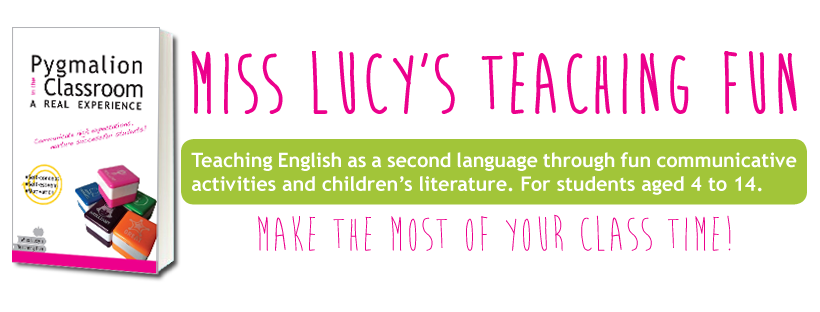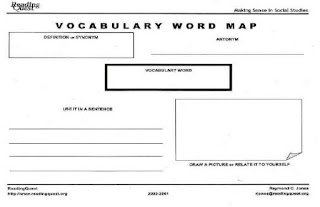I've wanted to write this post about 'readers' for a long time, since one of the pillars of learning (as I'll explain in my next book) is reading, even though we live in a somewhat complicated time regarding this subject.
As you know, reading is the number one source of independent access to knowledge, and it is no coincidence that the first years of compulsory education are devoted to learning this basic skill. Mastery of any language, mother tongue and non mother tongue, after a first approach made of listening and speaking, passes through the acquisition, use and practice of new words, or vocabulary, and grammatical expressions.
In the practice of teaching English as a second language, ESL, (or Foreign Language, EFL) in addition to the school's grammar and vocabulary textbooks, it is fundamental, in my opinion, to use graduated readings for these different reasons:
- First, because they present vocabulary and grammar in context, which allows an almost osmotic assimilation of them.
- Second, because these books always come with a CD or an audio track that helps learn the correct pronunciation of words as well as get the ear accustomed to different accents and speed of speech.
 - Third, because they provide a wide range of conversational topics: from summarizing a chapter to practice verb tenses and vocabulary, to expressing opinions on events, passing through an analysis of the differences between the social and historical context described in the text and the current one.
- Third, because they provide a wide range of conversational topics: from summarizing a chapter to practice verb tenses and vocabulary, to expressing opinions on events, passing through an analysis of the differences between the social and historical context described in the text and the current one.
- Fourth, and finally, because each reader also proposes reading comprehension exercises similar to those found in the most important official exams such as Cambridge and Trinity.
I personally tend to use them quite a lot, from the second/third year of primary school if my students attend a bilingual school or from the fourth/fifth year of primary school in the case of students attending non-bilingual schools, because at some point the conversation topics start to be always the same and, secondly, to avoid spending an hour translating* what children can't express for their lack of vocabulary when I want to work on their speaking skills. Naturally I have a couple of favorite reader collections that I usually use depending on my students' tastes: the Oxford Read and Imagine collection from level 3 (Cambridge Starters/Movers), which provides the audio tracks in British and American English, and CIDEB's Green Apple adapted classics collection.
Naturally I have a couple of favorite reader collections that I usually use depending on my students' tastes: the Oxford Read and Imagine collection from level 3 (Cambridge Starters/Movers), which provides the audio tracks in British and American English, and CIDEB's Green Apple adapted classics collection.
I usually use them for their aesthetic attractiveness, because they come with many images that at the same time support reading comprehension, and for the exercises that they propose, because in addition to questions about the text, they deepen other aspects such as the life of the author or the socioeconomic context, they propose research projects and interactive online activities.But the most important thing is that depending on the level, they propose topics that coincide with the English, social and natural school textbooks, and therefore they become another tool for strengthening language acquisition. More than once it has happened to me that, reviewing the lesson of the day, I have come to ask my students: do you remember that we saw this in that book? This circumstance seems of little importance, but, in fact, getting a student to connect the concepts of one book with those of another means leading him to reorganize his previous knowledge with the new one and therefore to generate significant learning, which is the ultimate goal of any teaching.
More than once it has happened to me that, reviewing the lesson of the day, I have come to ask my students: do you remember that we saw this in that book? This circumstance seems of little importance, but, in fact, getting a student to connect the concepts of one book with those of another means leading him to reorganize his previous knowledge with the new one and therefore to generate significant learning, which is the ultimate goal of any teaching.
*The effectiveness of having a human translator when learning languages has not yet been scientifically proven ;)
More about reading:
Reading as a game
How to make children love reading
--> Quiero leer esta entrada en castellano











As you know, reading is the number one source of independent access to knowledge, and it is no coincidence that the first years of compulsory education are devoted to learning this basic skill. Mastery of any language, mother tongue and non mother tongue, after a first approach made of listening and speaking, passes through the acquisition, use and practice of new words, or vocabulary, and grammatical expressions.
In the practice of teaching English as a second language, ESL, (or Foreign Language, EFL) in addition to the school's grammar and vocabulary textbooks, it is fundamental, in my opinion, to use graduated readings for these different reasons:
- First, because they present vocabulary and grammar in context, which allows an almost osmotic assimilation of them.
- Second, because these books always come with a CD or an audio track that helps learn the correct pronunciation of words as well as get the ear accustomed to different accents and speed of speech.
 - Third, because they provide a wide range of conversational topics: from summarizing a chapter to practice verb tenses and vocabulary, to expressing opinions on events, passing through an analysis of the differences between the social and historical context described in the text and the current one.
- Third, because they provide a wide range of conversational topics: from summarizing a chapter to practice verb tenses and vocabulary, to expressing opinions on events, passing through an analysis of the differences between the social and historical context described in the text and the current one.- Fourth, and finally, because each reader also proposes reading comprehension exercises similar to those found in the most important official exams such as Cambridge and Trinity.
I personally tend to use them quite a lot, from the second/third year of primary school if my students attend a bilingual school or from the fourth/fifth year of primary school in the case of students attending non-bilingual schools, because at some point the conversation topics start to be always the same and, secondly, to avoid spending an hour translating* what children can't express for their lack of vocabulary when I want to work on their speaking skills.
 Naturally I have a couple of favorite reader collections that I usually use depending on my students' tastes: the Oxford Read and Imagine collection from level 3 (Cambridge Starters/Movers), which provides the audio tracks in British and American English, and CIDEB's Green Apple adapted classics collection.
Naturally I have a couple of favorite reader collections that I usually use depending on my students' tastes: the Oxford Read and Imagine collection from level 3 (Cambridge Starters/Movers), which provides the audio tracks in British and American English, and CIDEB's Green Apple adapted classics collection.I usually use them for their aesthetic attractiveness, because they come with many images that at the same time support reading comprehension, and for the exercises that they propose, because in addition to questions about the text, they deepen other aspects such as the life of the author or the socioeconomic context, they propose research projects and interactive online activities.But the most important thing is that depending on the level, they propose topics that coincide with the English, social and natural school textbooks, and therefore they become another tool for strengthening language acquisition.
 More than once it has happened to me that, reviewing the lesson of the day, I have come to ask my students: do you remember that we saw this in that book? This circumstance seems of little importance, but, in fact, getting a student to connect the concepts of one book with those of another means leading him to reorganize his previous knowledge with the new one and therefore to generate significant learning, which is the ultimate goal of any teaching.
More than once it has happened to me that, reviewing the lesson of the day, I have come to ask my students: do you remember that we saw this in that book? This circumstance seems of little importance, but, in fact, getting a student to connect the concepts of one book with those of another means leading him to reorganize his previous knowledge with the new one and therefore to generate significant learning, which is the ultimate goal of any teaching.*The effectiveness of having a human translator when learning languages has not yet been scientifically proven ;)
More about reading:
Reading as a game
How to make children love reading
--> Quiero leer esta entrada en castellano































